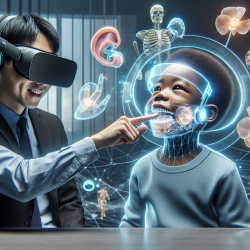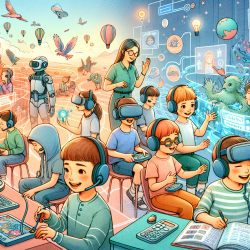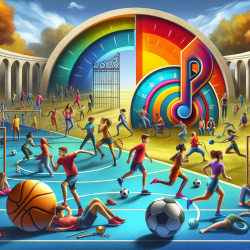In the field of speech-language pathology, data-driven decisions and evidence-based practices are paramount to achieving the best outcomes for children. The recent study titled "A Virtual Environment to Improve the Detection of Oral-Facial Malfunction in Children with Cerebral Palsy" by Martín-Ruiz et al. (2016) offers compelling insights into innovative therapeutic approaches using virtual environments.
According to the study, the SONRIE system—a virtual environment utilizing Kinect technology—has been designed to detect and evaluate oral-facial musculature dysfunctions in children with cerebral palsy (CP). This system employs interactive games to assess and improve facial muscle control, which is crucial for non-verbal expression, eating, and communication.
Key Findings from the Study
- SONRIE effectively detects compensatory muscle movements that are often challenging for therapists to identify through observation alone.
- The system is low-cost and game-based, making it accessible and engaging for children.
- Preliminary validation with typically developing children showed that the system accurately detects facial movements and provides reliable data.
- Validation with children with CP revealed that the system could identify specific impairments and offer targeted therapeutic interventions.
Practical Applications for Practitioners
Implementing the SONRIE system in your practice can significantly enhance the detection and treatment of oral-facial dysfunctions in children with CP. Here are some practical steps to consider:
- Incorporate SONRIE into Assessment Protocols: Use SONRIE to complement traditional assessment methods. The system's ability to detect subtle compensatory movements can provide a more comprehensive understanding of a child's oral-facial capabilities.
- Design Targeted Interventions: Based on SONRIE's data, create personalized therapy plans that address specific muscle dysfunctions. The system's game-based approach can help maintain the child's motivation and engagement during therapy sessions.
- Monitor Progress: Use the system's data storage capabilities to track improvements over time. This can help in adjusting therapy plans and demonstrating progress to parents and caregivers.
Encouraging Further Research
While the initial findings are promising, further research is needed to validate SONRIE's long-term efficacy and explore its potential in other therapeutic contexts. Practitioners are encouraged to participate in ongoing research efforts and contribute to the growing body of evidence supporting the use of virtual environments in pediatric rehabilitation.
To read the original research paper, please follow this link: A Virtual Environment to Improve the Detection of Oral-Facial Malfunction in Children with Cerebral Palsy.










